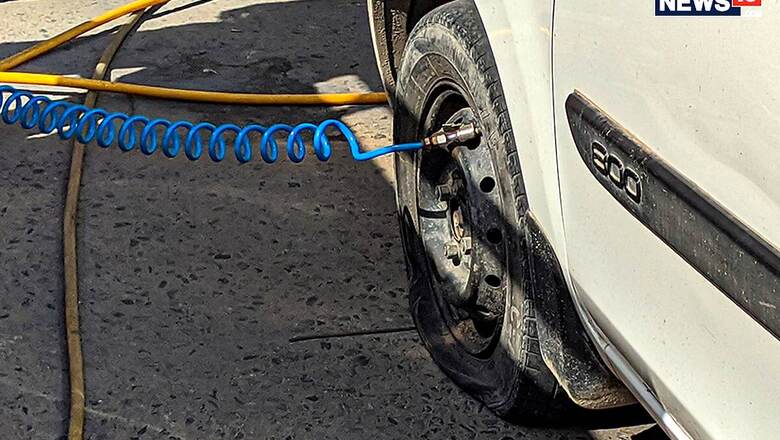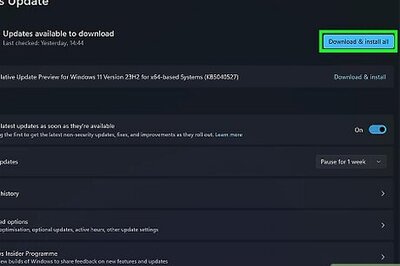
views
Since the coronavirus pandemic struck us in 2020, we have been adjusting ourselves to the new normal. No concerts, no sporting events, no festivals, no large gathering, no fun? Well, not exactly. With the lockdowns lifting, the roads are already loaded up with vehicles and people are trying to escape the chaos to find peace and solitude in nature. A long bike ride is the perfect escape from the bustling city streets and hectic schedules of everyday life.
Tyres are a vital part of the journey and ensuring that they are in top condition before hitting the road for a long road trip is a must. A good set of tyres also mean the rubber is in good condition which helps with the ride quality of the vehicle.
Before you leave home, these simple steps are recommended to protect your vehicle, and to prepare for a delightful road trip experience: –
Checking Tyre Air-Pressure
It is imperative to always check the tyre air inflation pressure of your vehicle in advance, as correct air pressure plays a key role in balanced braking, maximum grip, and maximum tyre life. The part of the tyre in contact with the road is the ‘footprint’. Incorrect tyre pressures will cause a lack of traction, rapid wear, and shorter tyre life. Ensure your tyres are filled with recommended air pressure as per your requirements – load – Solo/Dual Riding.
Recommended air-pressure can be checked by going through the “Vehicle Owner Manual" or “Tyre Information" sticker placed over the vehicle (fuel Tank/chain Set). Always make sure to use Valve Caps as it protects the valves not only from dirt and dust but also prevents air-leakage.
Checking for adequate Tread Depth
Proper tread depth helps to prevent tyres from aquaplaning/skid and makes riding safer especially during wet weather conditions. Therefore, it is always advised to check the tyre tread depths of your vehicle. All we need to do is compare the tyre tread’s depth with “TWI: Tread Wear Indicator – Bars" found in-between the tread grooves. If the tread depth has or nearly reached the TWI – raised bar height, then the tyre needs to be replaced and it will not be safe to ride, especially for longer routes where we require more traction due to high speed.
Continuous Inspection of Tyre’s Age
You can always check your vehicle’s Tyres age by simply searching for the four-digit -manufacturing code found on their sidewall. The first two number tells us the manufacturing week and last two numbers tell us the manufacturing year. Tyres are recommended to be replaced if they are more than 10 years old, no matter how much tread depth is left.
Find and fix slow air-leakages
If you find your vehicle’s tyre deflating after every second day or every week, it may be due to slow gradual air leakage caused by minute cuts, rim bends, faulty puncture repairs, damaged valve, or stem etc. This should be checked and resolved before you start your journey.
Visual Inspection for cuts/damages
Visually inspect your vehicle’s tyres for any kind of crack or cut or bulge. If you find any, it is advised to show and discuss with a tyre expert of the nearest authorized dealer counter.
Carry Emergency Tools
For emergencies, you should always carry a tyre inflator or a plug-in puncture repair kit to deal with issues involving tyre punctures.
Read all the Latest News, Breaking News and Coronavirus News here.



















Comments
0 comment